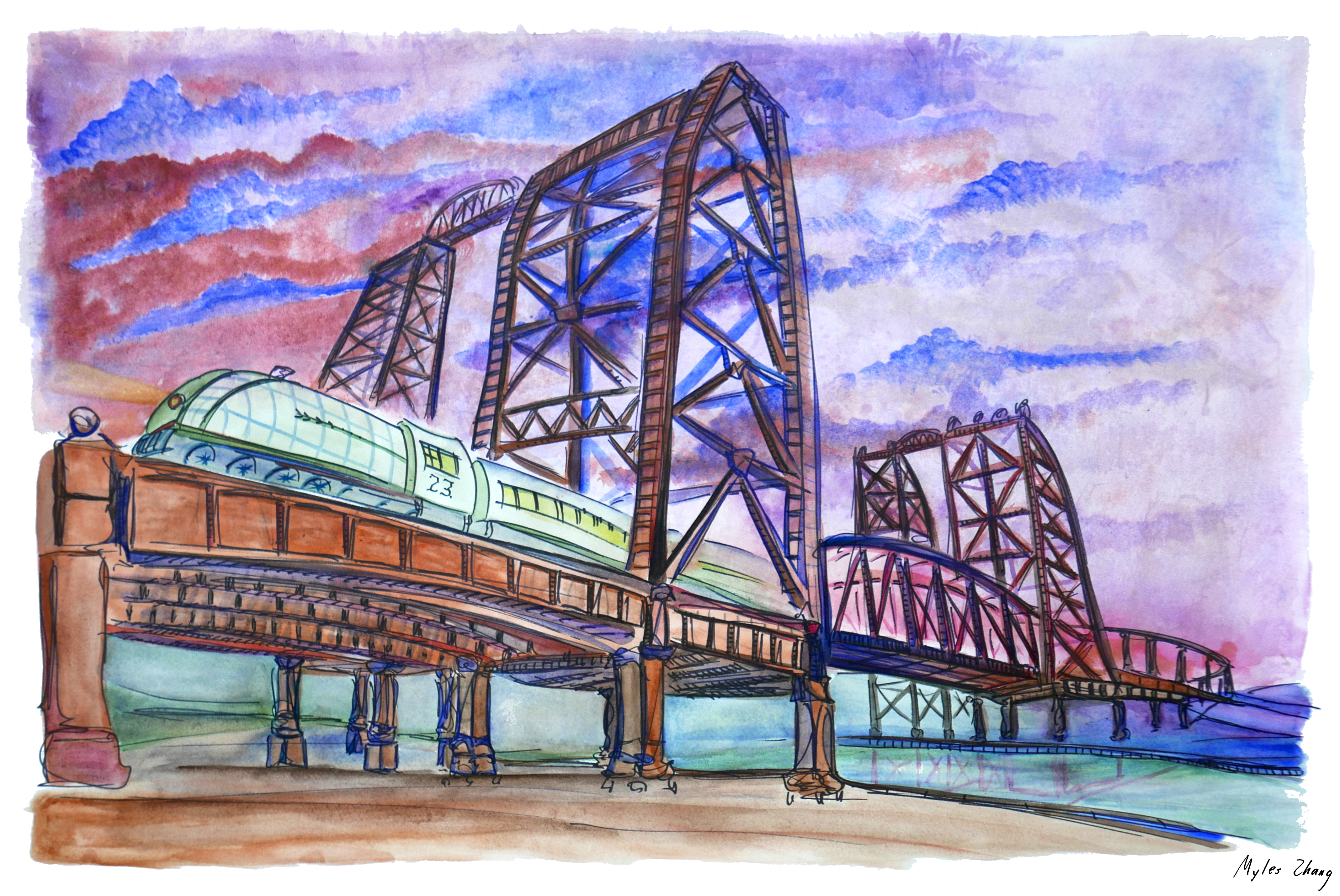
By Maia and Myles Zhang
.
In time, we will wind our way and rediscover the role of architecture and man-made forms in creating a new civilized landscape. It is essentially a question of rediscovering symbols and believing in them once again. […] Out of a ruin a new symbol emerges, and a landscape finds form and comes alive.
– John Brinckerhoff Jackson, A Sense of Place, A Sense of Time (1994)
.
In the past 60 years, my home city of Newark, NJ has lost 40% of its population and nearly 50% of its buildings.
The timely and needed development of Newark’s land is prevented through a combination of flawed government policy, economic downturns, risk-averse landowners, and lax enforcement of land use laws. As a result, hundreds of acres of prime urban land remain undeveloped as vacant parking lots. There are over 300 acres of paved surface parking lots in my neighborhood (link to interactive parking map). This sub-optimal and low-density land use has consequences for city government (undeveloped lands are taxed less), housing (Newark has a shortage of quality affordable housing), and the environment (parking lots burden the city’s sewer system with surface runoff). American cities are unique in the world for being so built around, and effected by, the car.
One of Newark’s larger vacant parcels was an electric factory and has sat empty for nearly 40 years — 25 years as a decaying warehouse and 15 more years as wasteland filled with yellow crabgrass and decomposing trash. For five years, rusting demolition equipment and a towering pile of brick, steel, and construction debris moldered in the center of the lot — visible to the millions of commuters who pass this site yearly, watching day by day as the building gradually deteriorated into weeds.
Then our family decided to experiment with ways to bring a semblance of new life to this tired soil: a garden. Our proposal to cover this raw earth in spring flowers was denied by the site’s owner, who was afraid community access would weaken his ownership stake as an absentee landlord. Undeterred, on a quiet weekend with few commuters passing by, we slipped behind the barbed wire fence to sow under the smiling sun. The wondrous flower mixture danced out of the plastic seeder, humming a soothing rhythm. Thanks to more nourishing rain, hope germinated from the infant seeds. Soon, sprouts began popping up hesitantly. At first, the green shoots looked no different from the weeds, but with time they grew taller and flowers bloomed — clover, sunflowers, daisies, and Queen Anne’s Lace. Where once commuters walked pass, now they would stop and take photos of our work, with the city skyline rising in background.
Every June, the sanitation workers come with their oily machines and sweaty equipment to level the land of the flowers we planted. With hatchets, they destroy the flowering fruits of our labor and re-expose the rubble strewn dirt. With chainsaws, they chop down the trees that sprout from the chain-link fence. They leave the mauled flowers and trees strewn on the ground where they fall. Over the following weeks, the flowers and leaves dry in the hot sun and return to the dusty earth tones of the dirt from which they sprang. However, each new year, the flowers return more resilient than before, and with more numerous and larger blossoms. In earlier years, the seeds’ return required our help and gentle watering. These days, they return unaided, attracting the occasional bird. The cycle repeats… “Where flowers bloom, so does hope.”
.
Learn more about this project on GoFundMe.
Read more about Newark’s urban decay.
This project was also featured in the spring 2018 edition of Sine Theta magazine.
.
Westinghouse demolition
.

Westinghouse demolition near Newark Broad Street Station
.

The Wesinghouse before demolition

The Westinghouse in the 1940s

“On Top” painting by Maria Mijares in 2008

Rubble in 2009
.

The chimney falls
.

Newark Broad Street Station
.
Now an urban garden
.








































































































































































































































































































